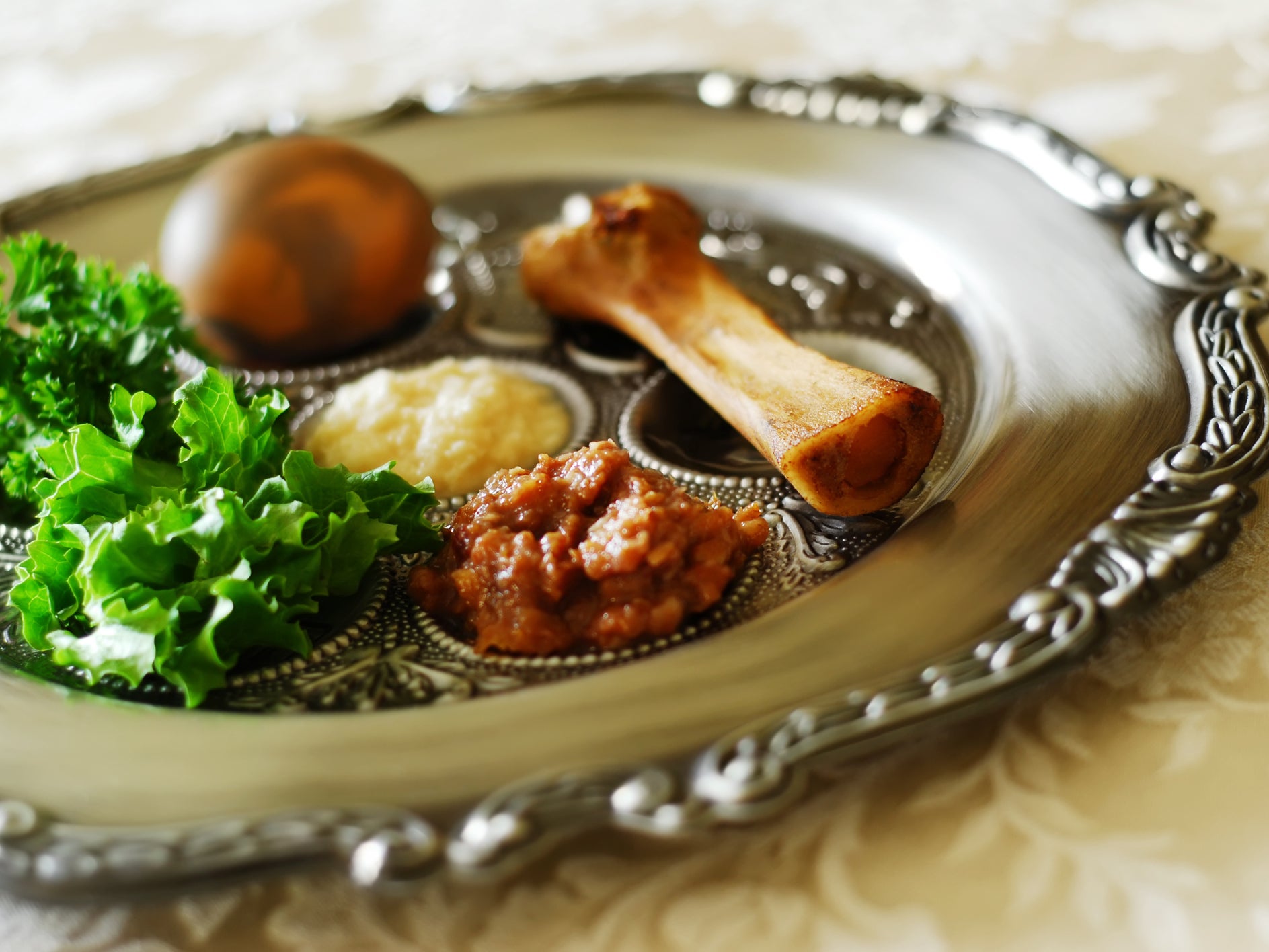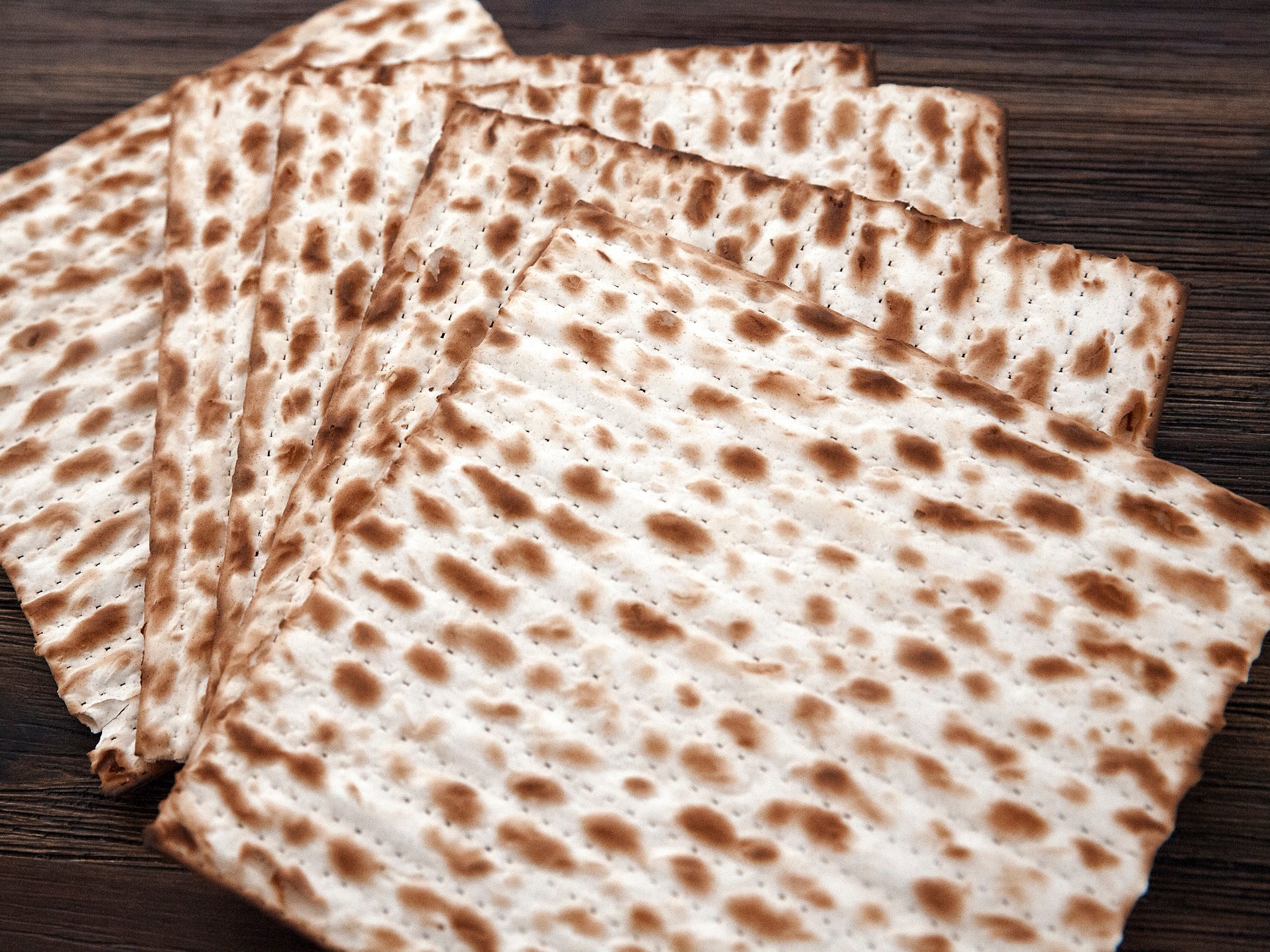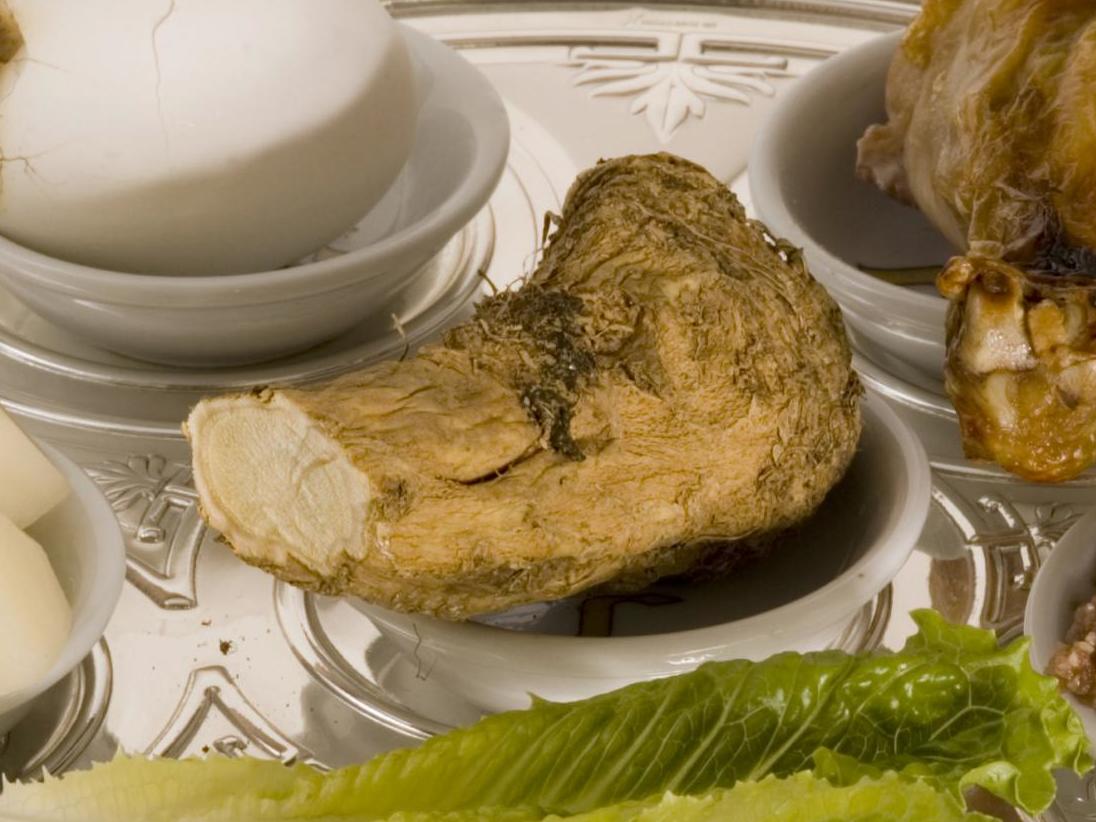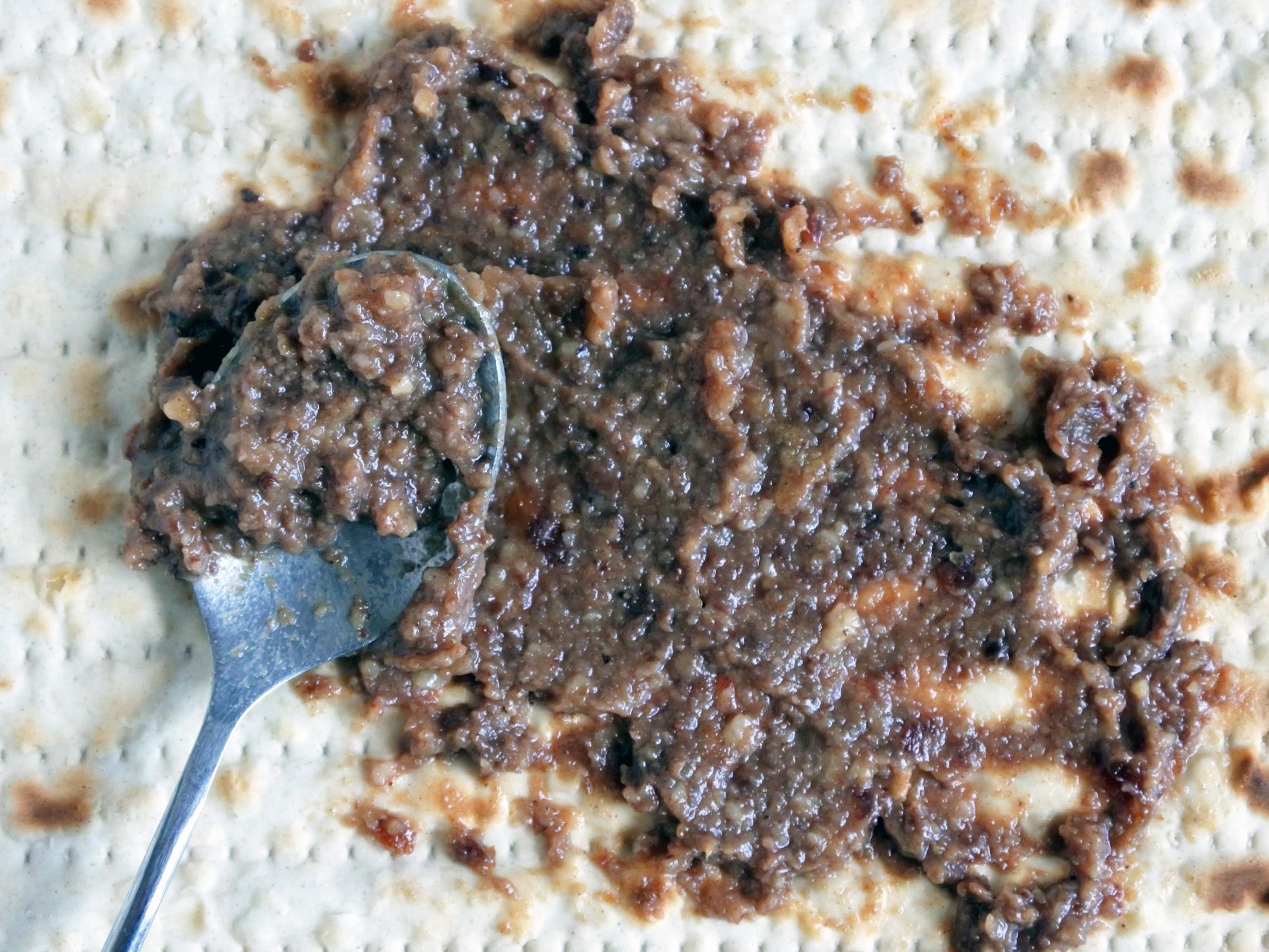Passover 2021: The meaning of foods eaten during the Jewish festival
The foods eaten at the Seder table are all heavily symbolic

This year, the Jewish festival of Passover, or Pesach, as it is known in Hebrew, starts on Saturday 27 March.
The observance commemorates Moses leading the Jewish people out of Egypt to the "promised land" of Canaan, following years of slavery.
Every year, Jewish families celebrate the first two nights of the festival by sitting around the Seder table and eating foods that symbolise the plight of their ancestors.
These include matzah, which represents the unleavened bread the Jewish people took with them as they embarked on a 40-year journey through the desert.
Here's everything you need to know about the meaning behind foods eaten during Passover:
Matzah

When the Jewish people fled Egypt, as the story of Passover goes, they didn't have much time to prepare food for the long journey ahead.
They were forced to leave their homes with unleavened bread, as the bread they'd been making hadn't had enough time to rise.
This is why matzah, an unleavened flatbread, is eaten during the festival.
Plain matzah is made from flour and water, although other variations of matzah may also contain ingredients including egg, milk and fruit extracts.
During the Seder meal, three pieces of matzah are placed on top of each other and covered with a napkin.
These three pieces of matzah represent three groups of Jewish people: the Kohanim (priests), the Levites (members of the Levi Hebrew tribe) and the Israelites, Jewish organisation Chabad explains.
The piece of matzah in the middle of the pile is broken, and half of it is hidden for an activity later on in the evening.
During the Seder night, Jewish children play a game with the aim of finding the hidden piece of matzah, called the afikoman.
The child who finds the afikoman at the end of the meal wins a prize.
Maror

The maror which appears on the Seder plate is bitter herbs, often in the form of the root vegetable horseradish.
This item represents the bitterness of the lives of the Jewish people who were enslaved and put through hard labour for years in Egypt.
In a verse in the Torah, the books of Jewish scripture, it states: "And they embittered their lives with hard labour, with mortar and with bricks and with all manner of labour in the field; any labour that they made them do was with hard labour."
Romaine lettuce is also frequently used as maror, due to its bitter aftertaste.
Charoset

A pasty concoction made from fruits and nuts, charoset is representative of the mortar the Jewish slaves used for their hard labour in ancient Egypt.
During the Seder meal, it's tradition to eat a "Hillel sandwich", made by combining charoset and maror within two pieces of matzah.
According to historian Dr Susan Weingarten, the tradition of eating charoset, which isn't mentioned in the Torah, stems back to the ancient Romans.
Dr Weingarten states that the Romans believed that eating bitter foods was "bad for you".
"I reckon that what happened was that ever since leaving Egypt, the Jews had been eating their maror and parsley. The Romans arrived and said: 'You need to dip it into this charoset to stop them harming you'. So it became part of the service."
Parsley

Parsley, or another form of green vegetable, appears on the Seder plate for the opposite reason to the bitter herbs - to represent hope and renewal.
This is particularly poignant for the story of Passover, as the Jewish people were able to look forward to a new life in the "promised land" following years of slavery.
It's custom to eat the parsley after dipping it in salt water, a symbol of the tears of the Jewish slaves.
Shank bone

The shank bone that appears on the Seder plate is usually that of a lamb, although bones from other animals, such as chickens, are sometimes used.
This represents the lamb that the Jewish people would sacrifice as a Passover offering at the Holy Temple in ancient Jerusalem.
Nowadays, the shank bone isn't eaten during the festival meal.
When Jewish people read the story of Passover from a book called the Haggadah, they articulate how God inflicted terrible plagues upon Egypt, the last of which involved the deaths of all firstborn sons.
In order to protect the Jewish people from the last, deadly plague, God instructed Moses to tell the Jewish people to mark their front doors with lambs' blood.
God then proceeded to "pass over" the houses that had been daubed with the blood when inflicting the plague, hence where the name for the festival comes from.
Hard-boiled egg

The hard-boiled egg eaten during the feast of Passover is a symbol of mourning.
Eggs are a symbol of mourning in Judaism because, as an object with a round shape, it represents the symbol of life, a component of which is death.
For some Jewish families, it's tradition to eat a hard-boiled egg dipped in salt water, a symbol of the Jewish slaves' tears, for the first course of their Seder meal.
Wine

Wine plays an important role during the Passover proceedings.
At a certain point when reading the story of the festival from the Haggadah, the 10 plagues inflicted on Egypt by God are read out.
As the plagues are read out, Jewish people spill a small amount of wine for each one.
It's widely believed that is done in recognition of the fact that while the Jewish people were liberated, the Egyptians suffered.
Throughout the Seder meal, four cups of wine are drunk, as a symbol of the Jewish people's freedom.
It is custom to lean to the left while drinking these cups of wine, as only those who are free are able to recline while drinking wine.
During the feast, an extra cup of wine is placed on the table for the prophet Elijah.
This is done with the belief that one day, the prophet will signal the arrival of the Messiah.
For everything you need to know about Passover, click here.
Join our commenting forum
Join thought-provoking conversations, follow other Independent readers and see their replies
Comments